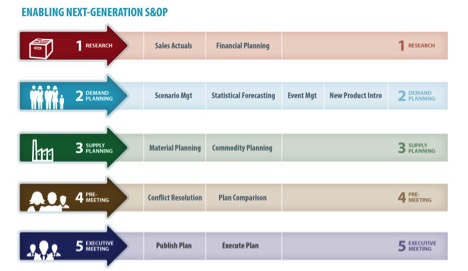This post has already been read 10947 times!

Leading platform as a service (PaaS) and cloud infrastructure companies have made significant progress in data encryption, permission-based access, and data level security, causing supply chain leaders to re-evaluate the deployment of a cloud-based planning layer over their core ERP.
Properly architected, a cloud-based planning layer enables sharing of S&OP data across key stakeholders Click To TweetProperly architected and implemented, a cloud-based planning layer enables the sharing of S&OP data across key stakeholders: contract manufacturers, branded and generic business units, distributors and retailers. This planning layer enables collaborative and iterative simulation planning that takes into consideration pertinent factors such as current demand, projected sales scenarios and supply constraints like lead time and capacity.
Once consensus has been achieved on the forecast and the upstream planning of materials and capacity have been agreed to by all concerned stakeholders (for example, the brand owner and its contract manufacturers), the plan can then be adopted by the respective ERP systems to generate lower-level planning like MPS or MRP. In more advanced implementations the platform will be deployed at the execution layer as well, eliminating the need to integrate across multiple ERP silos. See below for an example system.

The core of this platform shift resides in the data model itself. The platform contains a deep and rich data model which will represent data globally across all underlying systems, empowering both the advanced S&OP functions as well as supporting data and decision integration back into the ERP environment. This allows the supply network to be easily rolled out to multiple sites within the enterprise and also adopted by new suppliers and customers.
Manufacturers now realize that integrating upwards of 100 contract manufacturers in different regions into their core ERP would take several years. Because cloud based network offerings provide instant connectivity and the ability to maintain a complex and scalable network, regardless of the number of interfaces involved, they are increasingly the choice of companies across almost every industry.
To read more about this subject, I suggest you read the new whitepaper, Supply Chain’s New World Order, which discusses the cloud, S&OP, and why a holistic approach is needed for supply chain management.
- Map of U.S. Trucking Spills in 2016 - January 13, 2017
- What is aPaaS? A Way to Supercharge Your App Development - December 12, 2016
- Future of Transportation: Goodyear’s Radical Smart Tire Concept - November 3, 2016
